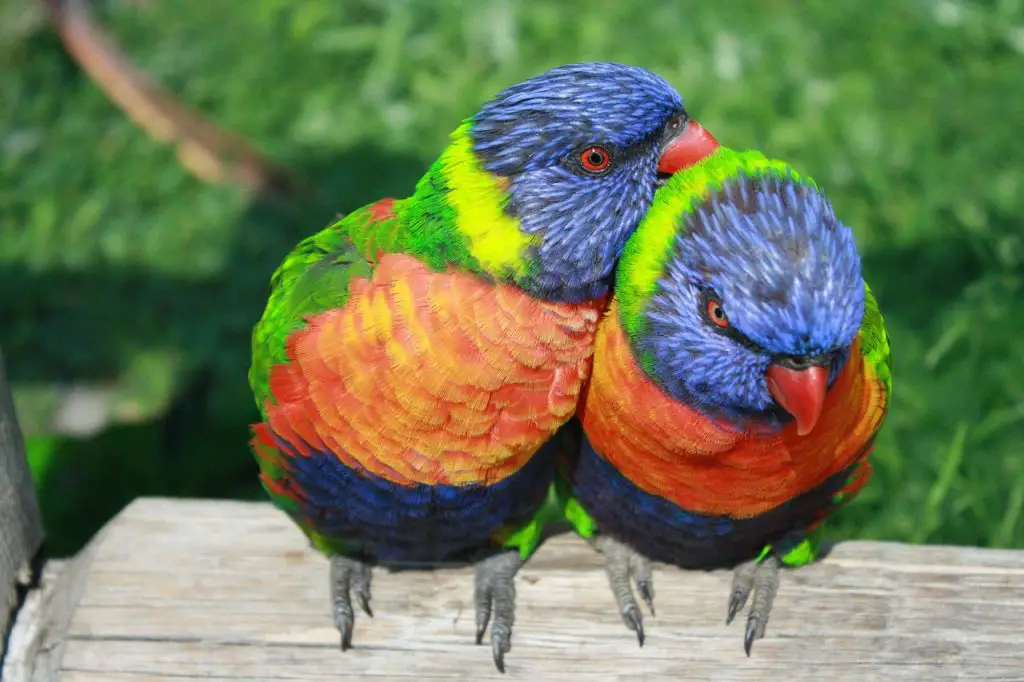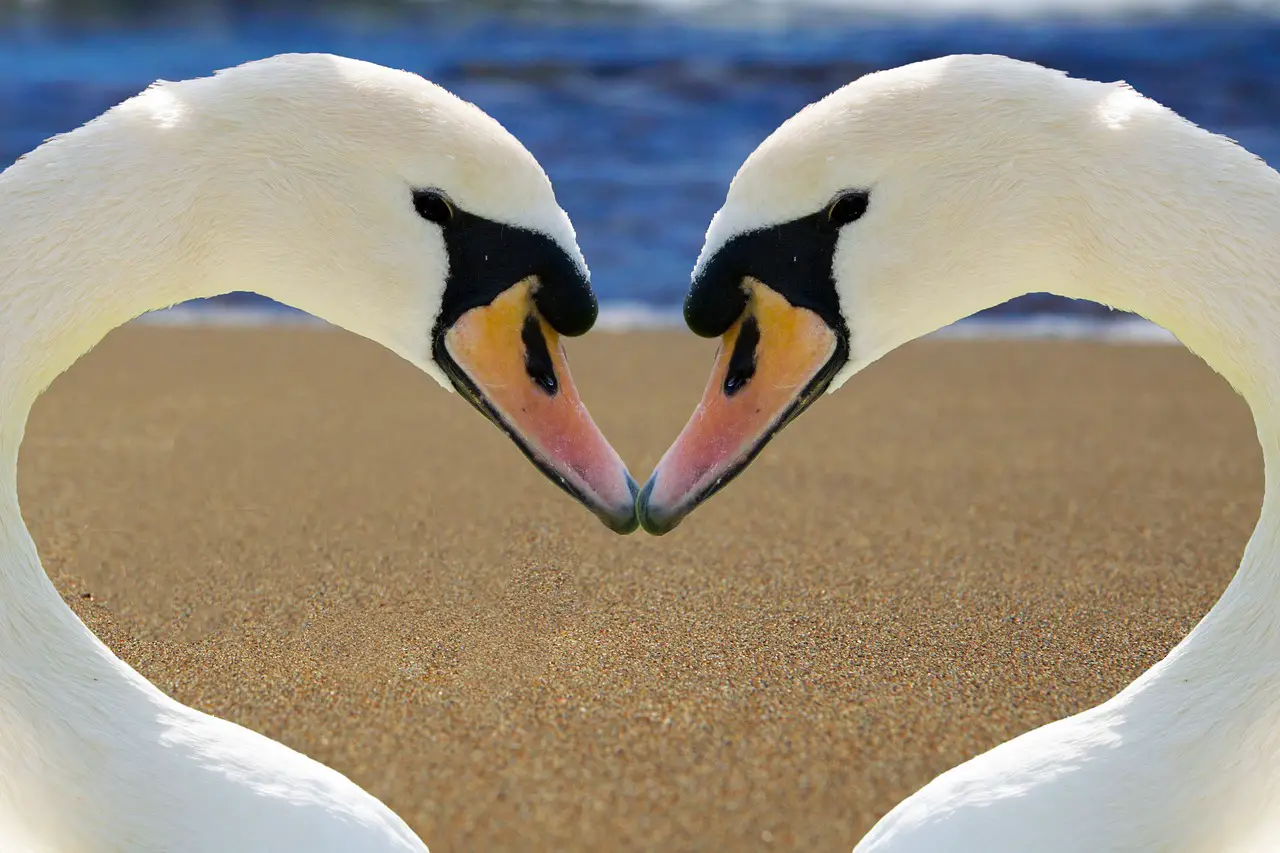Monogamy, staying with one partner, is much more common in birds than it is in mammals. It is thought that about 90% of all bird species are monogamous for at least part of the breeding season. In this article, we look at some of the species that stay together and how it benefits them.
Most birds species stay together for at least part of the breeding season to raise their young and ensure that their genes are passed on to future generations. Some birds of prey, Albatross, Vultures, and Geese stay together for several seasons, essentially mating for life.
If you want to know more about why birds stay together, please read on.
Do you know what co-operative breeding is? Find out here

What is monogamy?
A monogamous relationship is where the male or female has only one partner, forming a pair bond. This can last for their whole lives, although this is rare, last a few seasons, seasonally, or part of a season. Most birds that are monogamous will stay with their partner for part of a breeding season.
Not all birds are monogamous, with the remaining species practising polygyny, where the male has more than one partner or polygamous where the female has more than one partner.
Monogamy in birds covers different mating relationships. While the male and female have an almost exclusive mating relationship, the work the male puts in varies between species. Males may do most of or very little in the way of gathering food or defending their territory.
If you are interested in the different mating systems I have written this article
Why do birds stay with one partner?
Birds need to breed to pass their genes on to future generations and ensure the survival of the species. Because of this, you may think that birds would not stay with one partner as more mates would mean more chicks.
However, in order to ensure that their genes are passed onto successive generations, they need to make sure that their chicks don’t just survive, but thrive. If their offspring do not have their own chicks then the bloodline stops.
In order to reproduce successfully, genes need to be passed down to more than one generation. Reproduction success means that their chicks need to breed. Birds stay with a mate to give their offspring the best chance to have their own young.
Males stick with their mate to guarantee that their young have the best chance of reaching breeding age, thus passing on their genes. Monogamy gives the male the best chance of ensuring this for their chicks to survive.
Males will find food for the chicks much easier than a female alone. Lone females may struggle to feed their brood, and if they then fledge, they may not be in the best condition to mate when the opportunity arises. Birds need to be in the best condition to attract a mate in breeding season and chicks that have not been looked after as carefully will be at a disadvantage.
Birds are unlike mammals as both the male and female can look after their young as well as each other. While female mammals need to feed their young milk, both males and females can feed their chicks. Both adults can also incubate the eggs, defend the nests, and clean out the nest.
Monogamy is essential in areas of high predation. Both the male and female will need to protect their offspring where one parent would not be enough. Many colonial nesters are monogamous to ensure that their young survive attacks.
Do you know how birds protect themselves? Find out here

In areas of low food sources, monogamy is also prevalent as both parents have time to find food. Albatross and Petrels often have to find food many miles away and can be gone from the nest for a few weeks. If they were not monogamous, the chicks would not survive alone.
Mallards are monogamous although the male doesn’t help rear the young, feed them, or protect them. As the male does not protect them, female mallards are often killed by predators, meaning there is a higher percentage of males alive.
As there are fewer females, the male (drakes) compete to mate with them. In order to keep the female, the male will defend her from other males throughout the colder seasons.
The drake ensures that only he mates with the female, although this is difficult with so many males around. This allows the female to feed without the bother of amorous males.
Polygamous males often attract more females if they live in a food rich territory that is safe from predators, but most monogamous species live in similar territories to each other. Because there is nothing to differentiate their territory from another male, females are more likely to stay with one partner.
Do you know why birds sing so early in the morning? Find out more here
How long do monogamous birds stay together?
Monogamous birds do not always stay together for a long time, and it is rare that birds stay together for long periods of time.
Most will stay together for part of a season or the whole season. If the species can have more than one brood in a season, then they may have more than one monogamous relationship. Once the chicks have fledged, they will move on to another relationship.
Because they stay with one partner at a time, even for a short time, they are still monogamous.
Some birds of prey such as Owls, Eagles, Geese, Vultures and Swans stay together for life. When we talk about staying together for life, this is generally for several seasons. Most birds that stay together for long periods of time also have long lives.
Most of our backyard birds such as Robins and Goldfinches only stay together for one breeding season.
What are extra-pair copulations?
Monogamy is not the same as being a faithful partner. Although monogamous birds form a pair-bond, mating may also take place outside of this bond. Extra-pair copulations are very common in birds and they favour males. Because males need to ensure that their genes are passed down they will mate with other females while waiting for their own eggs to hatch and chicks to be raised.
Birds that are in the best condition with an abundant supply of food and an area safe from predators often live longer, and these birds mate the most and have the most offspring.
Although extra-pair copulations favour the male, females are often able to mate with a male that is in peak condition, giving their chicks an advantage in life.
10% of birds have more than one partner. Find out more about polyandry here

